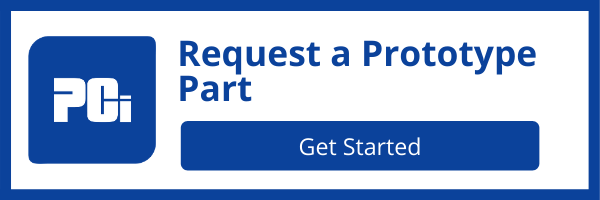Thermoforming vs. Fiberglass Molding: Comparing Durability, Weight Reduction, and Speed of Production
In the world of manufacturing, choosing the right method for producing parts is crucial for achieving optimal results. Two popular methods, thermoforming and fiberglass molding, offer unique advantages and considerations.
Durability
Durability is a critical aspect of part manufacturing, especially when parts are subjected to various environmental conditions and impacts.
Fiberglass molding produces stiff and rigid parts that are highly resistant to impact, making them ideal for applications where structural integrity is paramount. On the other hand, thermoforming yields parts with a degree of flexibility, allowing them to absorb impact more effectively. This flexibility can be advantageous in applications where parts are prone to bending or flexing without compromising their structural integrity.
Both thermoforming and fiberglass molding offer flexibility in material selection, combinations, and thicknesses. This versatility enables manufacturers to tailor parts to withstand specific environmental conditions, whether it's extreme temperatures, corrosive chemicals, or prolonged exposure to UV radiation. By selecting the right materials and thicknesses, manufacturers can ensure that their parts remain durable and reliable under demanding conditions.
Weight Reduction
 In industries such as transportation, aerospace, and consumer goods, weight reduction is a key consideration for improving fuel efficiency, performance, and overall cost-effectiveness. Thermoforming holds a significant advantage in this regard, as it produces lightweight parts that contribute to weight savings without compromising strength or durability.
In industries such as transportation, aerospace, and consumer goods, weight reduction is a key consideration for improving fuel efficiency, performance, and overall cost-effectiveness. Thermoforming holds a significant advantage in this regard, as it produces lightweight parts that contribute to weight savings without compromising strength or durability.
Thermoformed parts can be up to 50% lighter than similar parts manufactured using fiberglass molding, making them an attractive choice for applications where weight savings are essential. This weight reduction not only improves fuel efficiency in vehicles but also reduces material costs and transportation expenses, leading to overall cost savings throughout the product lifecycle.
Moreover, the lightweight nature of thermoformed parts makes them easier to handle, assemble, and transport, streamlining manufacturing processes and improving overall efficiency. Whether it's reducing the weight of automotive components, aircraft interiors, or consumer electronics, thermoforming offers a viable solution for achieving weight reduction goals without sacrificing performance or durability.
Speed of Production
In today's fast-paced manufacturing environment, speed of production is often a decisive factor in choosing a manufacturing method. Thermoforming offers significant advantages in terms of production speed, thanks to shorter cycle times and decreased labor requirements compared to fiberglass molding.
Thermoforming machines can produce parts at a much faster rate, making them ideal for high-volume production runs where time is of the essence. Additionally, the simplicity of thermoforming tooling allows for quick setup and changeover between different parts, further enhancing production efficiency and flexibility.
The ability to produce more parts per hour from a single thermoforming tool reduces the per-part tooling cost and minimizes the need for multiple tooling sets. This cost-effective approach to production can result in significant savings for manufacturers, especially when producing large quantities of parts.
Chemical/Disinfectant Resistance
Thermoformed materials and fiberglass present contrasting approaches to chemical resistance. Thermoformed plastics like Kydex® (pvc) or HDPE/HMWPE (polyethylene) possess inherent chemical resistance properties through their molecular structure, providing immediate protection against various chemicals and disinfectants without additional treatment.
Fiberglass requires supplementary processes such as specialized resin systems, surface coatings, or treatments to achieve optimal chemical resistance. While both materials can effectively resist chemicals, fiberglass's dependency on these additional protective measures can impact manufacturing complexity and cost.
Design Capabilities
Thermoformed and fiberglass materials exhibit significantly different manufacturing characteristics.
Fiberglass excels in producing highly consistent parts with complex geometries, offers integral color technology for permanent coloration, and provides diverse texture options while maintaining dimensional stability.
Fiberglass struggles with quality consistency across production runs, typically requires post-production painting or a decorative cap for aesthetic finishing, has limited texture options, and shows inconsistent dimensional stability.
These differences make thermoforming particularly suited for applications requiring precise, repeatable results with integrated aesthetic features, while fiberglass may need additional processing steps to achieve similar results.
Making a Decision
Both thermoforming and fiberglass molding offer unique advantages and considerations for durability, weight reduction, and production speed. Thermoforming excels in weight reduction and production speed, offering lightweight parts with faster cycle times and lower labor costs, better chemical resistance, and more design options. On the other hand, fiberglass molding remains a viable option for applications requiring rigid parts with excellent impact resistance.
By carefully evaluating your project's specific requirements and weighing the pros and cons of each method, you can make an informed decision that aligns with your manufacturing needs and objectives. Whether you prioritize durability, weight reduction, or production speed, thermoforming and fiberglass molding offer versatile solutions for various applications in various industries.



